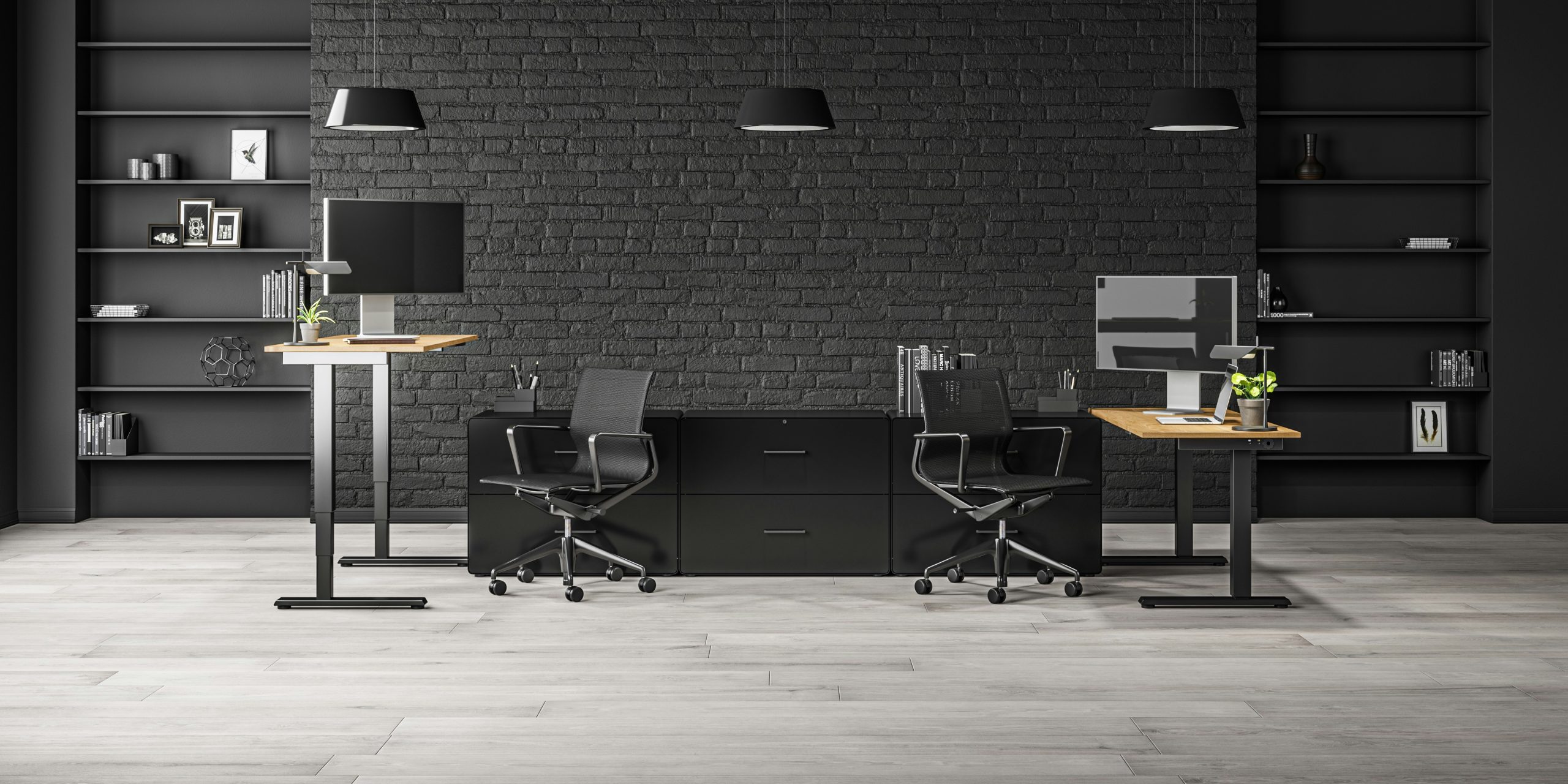Looking to enhance your workspace comfort? Discover the key factors in selecting the perfect office chair for optimal comfort.
Ergonomic Design for Maximum Comfort

Office Chair: Ergonomic Design for Maximum Comfort
Having the right office chair is essential for anyone spending long hours working at a desk. An ergonomic design that prioritizes comfort and support can make a significant difference in overall well-being and productivity. Let’s delve into the key elements of an ergonomic office chair that can provide maximum comfort to users.
Adjustable Seat Height and Depth
One of the fundamental features of an ergonomic office chair is the ability to adjust the seat height and depth. Being able to customize the chair to fit your body dimensions ensures proper alignment of your spine and promotes good posture. Users should be able to sit with their feet flat on the floor, knees at a 90-degree angle, and thighs parallel to the ground.
Lumbar Support
Proper lumbar support is crucial for preventing lower back pain, a common issue among office workers. An ergonomic office chair should have adjustable lumbar support to maintain the natural curve of the spine and reduce strain on the lower back muscles. This feature helps users maintain a healthy sitting posture and minimizes the risk of back problems.
Adjustable Armrests
Adjustable armrests play a vital role in supporting the arms and shoulders, reducing strain on the upper body. The ideal armrest height should allow users to relax their shoulders and keep their elbows at a 90-degree angle while typing. Properly positioned armrests can prevent neck and shoulder pain associated with poor arm support.
Seat Pan Design
The seat pan of an ergonomic chair should be designed for optimal comfort and circulation. A contoured seat with rounded edges helps distribute weight evenly and reduces pressure on the thighs. Additionally, the seat pan should have enough depth to support the user’s thighs without restricting blood flow to the legs.
Breathable Fabric and Padding
Comfort is also influenced by the material used for the chair’s upholstery. Opt for a breathable fabric that promotes airflow and prevents overheating during long hours of sitting. Adequate padding is essential to cushion pressure points and ensure a comfortable seating experience throughout the day.
Swivel and Mobility
A swivel base and smooth mobility are practical features of an ergonomic office chair that enhance productivity and convenience. Being able to rotate easily and reach different areas of your workspace without straining increases efficiency and reduces the risk of muscle fatigue.
Investing in an ergonomic office chair with a design focused on comfort and support is a wise decision for anyone prioritizing their well-being at work. By choosing a chair that incorporates adjustable features, lumbar support, armrests, and quality materials, users can create a workspace that promotes good posture and reduces the likelihood of musculoskeletal issues. Remember, a comfortable office chair is not only a luxury but a necessity for long-term health and productivity.
Considerations for Proper Posture

Choosing the Right Office Chair
When it comes to maintaining proper posture in the workplace, selecting the right office chair is paramount. Here are key considerations to keep in mind:
Ergonomic Design
Opt for an office chair with ergonomic design features such as adjustable seat height, lumbar support, and armrests. These elements help ensure that your chair fits your body proportions and supports your spine’s natural curve.
Seat Height and Depth
Adjust the chair’s height so that your feet are flat on the floor and your knees are level with your hips. The seat depth should allow for a few inches of space between the front edge of the seat and the back of your knees to promote proper circulation.
Back Support
Look for a chair with adequate lumbar support to maintain the natural curve of your lower back. This support helps prevent slouching and reduces strain on your back muscles.
Armrests
Armrests should be adjustable in height and width to support your arms comfortably, allowing your shoulders to relax. When sitting, your arms should form a 90-degree angle at the elbows with your wrists straight while typing.
Swivel and Recline Function
A chair that swivels and reclines promotes movement and flexibility throughout the workday. Being able to shift positions reduces the risk of stiffness and encourages blood flow.
Seat Material
Choose a seat cushion that is firm enough to support your weight comfortably without being too hard. The material should be breathable to prevent overheating and maintain comfort during prolonged sitting.
Mobility
Consider the chair’s base and casters to ensure smooth movement across different flooring surfaces. Mobility is essential for reaching items on your desk without straining or twisting your body.
Regular Adjustment and Movement
Even with the best office chair, it’s important to maintain good posture by regularly adjusting your seat position and taking short breaks to stand, stretch, and walk around. Movement is crucial for reducing the risk of stiffness and musculoskeletal issues.
By carefully selecting an office chair that prioritizes ergonomics and supports proper posture, you can create a more comfortable and conducive workspace. Remember to make adjustments as needed and incorporate movement into your daily routine to promote overall well-being and productivity.
Adjustability and Customization Features

Customization Features Enhance Comfort and Productivity
Office chairs are essential pieces of furniture in any workspace, and their adjustability and customization features play a crucial role in ensuring comfort and productivity. The ability to customize various aspects of an office chair, such as seat height, armrest position, and lumbar support, allows users to create a personalized seating experience that caters to their unique needs.
Adjustable Seat Height for Optimal Posture
One of the key features of a quality office chair is adjustable seat height. The ability to raise or lower the seat ensures that the user’s feet rest comfortably on the floor, promoting proper posture and reducing strain on the lower back. By adjusting the seat height to the optimal level, individuals can prevent discomfort and potential long-term health issues associated with poor sitting habits.
Flexible Armrest Positioning for Arm and Shoulder Support
Customizable armrests are another important aspect of an ergonomic office chair. Adjustable armrests allow users to position their arms and shoulders in a way that reduces tension and fatigue during long periods of sitting. Proper armrest positioning can enhance comfort, prevent stiffness, and support overall upper body alignment, contributing to a more comfortable and efficient work experience.
Enhanced Lumbar Support for Back Health
Lumbar support is crucial for maintaining good back health while sitting for extended periods. Many office chairs come equipped with adjustable lumbar support features that enable users to customize the level of support to fit their unique spinal curvature. Proper lumbar support helps maintain the natural curve of the spine, alleviates pressure on the lower back, and reduces the risk of developing back pain or discomfort.
Personalized Recline Function for Relaxation and Focus
Some office chairs offer a recline function that allows users to tilt the backrest to their preferred angle. This feature can promote relaxation during breaks or moments of rest while also facilitating focus and concentration during work tasks. A personalized recline function enables individuals to find a position that supports their comfort and enhances their productivity throughout the workday. In conclusion, the adjustability and customization features of office chairs are instrumental in creating a comfortable and productive work environment. By selecting a chair with customizable seat height, armrest positioning, lumbar support, and recline functions, individuals can tailor their seating experience to meet their specific needs and preferences. Investing in an ergonomic office chair with these adjustable features is a valuable decision that can positively impact overall health, well-being, and work performance.
Materials and Durability for Long-Term Use
Office Chair: Materials and Durability for Long-Term Use
When it comes to selecting the perfect office chair, considering the materials used in its construction and its overall durability is crucial for long-term comfort and support. The right combination of materials can significantly impact the chair’s lifespan and how well it maintains its ergonomic properties over time. Let’s delve into the key aspects of office chair materials and durability for prolonged use.
Materials Matter
The materials used in an office chair play a vital role in its comfort, durability, and overall performance. Here are some common materials found in office chairs: – Mesh: Mesh is a popular choice for office chairs due to its breathability and comfort. Chairs with mesh backs allow for better airflow, keeping you cool during long hours of work. – Leather: Leather chairs exude elegance and sophistication. They are durable and easy to clean, making them suitable for a professional setting. However, leather chairs may not provide as much breathability as mesh. – Fabric: Fabric chairs offer a wide range of colors and patterns to choose from. They are comfortable and can add a touch of warmth to your workspace. Fabric chairs are generally easy to maintain and can be a versatile option for various office styles.
Durability for Long-Term Use
When investing in an office chair for long-term use, durability is key to ensuring that your chair remains comfortable and supportive over time. Consider the following factors when assessing the durability of an office chair: – Frame Material: A sturdy frame is essential for the longevity of an office chair. Look for chairs with metal or high-quality plastic frames that can withstand daily use without losing their shape or stability. – Wheelbase: The wheelbase of an office chair should be strong and smooth for easy movement. Opt for chairs with durable wheelbases that glide effortlessly on different types of flooring without causing damage. – Upholstery Quality: The quality of the upholstery can determine how well a chair holds up over time. Choose materials that are stain-resistant, easy to clean, and resistant to wear and tear for a chair that looks and feels good for years to come.
Maintenance Tips
To extend the lifespan of your office chair and ensure its durability for long-term use, here are some maintenance tips to keep in mind: – Regularly clean the chair to prevent dust and debris from accumulating. – Tighten any loose screws or bolts to maintain stability. – Lubricate the wheelbase to ensure smooth movement. – Avoid placing excessive weight on the chair beyond its recommended capacity. By selecting an office chair made from high-quality materials and prioritizing durability, you can enjoy a comfortable and supportive seating experience for years to come. Ergonomic design, durability, and maintenance are key factors to consider when choosing an office chair that will meet your long-term needs.
